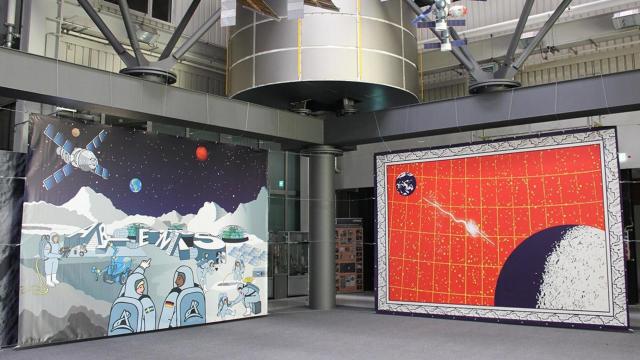A recent competition organised by the European Space Agency asked art students to draw inspiration from the upcoming Artemis lunar program. The results are impressive.
Students from eight art schools across Europe participated in ESA’s Art for Artemis contest, in which the contestants created artworks to commemorate the upcoming program. Of the 24 pieces submitted, ESA chose two that will hitch a ride to the Moon aboard the European Service Modules, which will power NASA’s Orion spacecraft. But it’s a shame that only two could be chosen, as the other submissions were just as delightful and inspiring.
Earth-Moon connection

The first of the two winning entries was submitted by Tessa Kugel, a Master’s student at Beaux Arts de Paris, France, and it depicts a digital drawing of the Moon with a stream of light connecting it to Earth. The frame was inspired by German artist Hildegarde de Bingen’s “Scivias, Codex illuminatus,” a drawing from 1180 that shows the cosmos inside an egg, according to Kugel.
“I wanted the piece to be simple and evoke a little bit the space exploration posters and graphics of the past century while using visual elements that are both older and more recent,” Kugel said.
Lunar Portrait
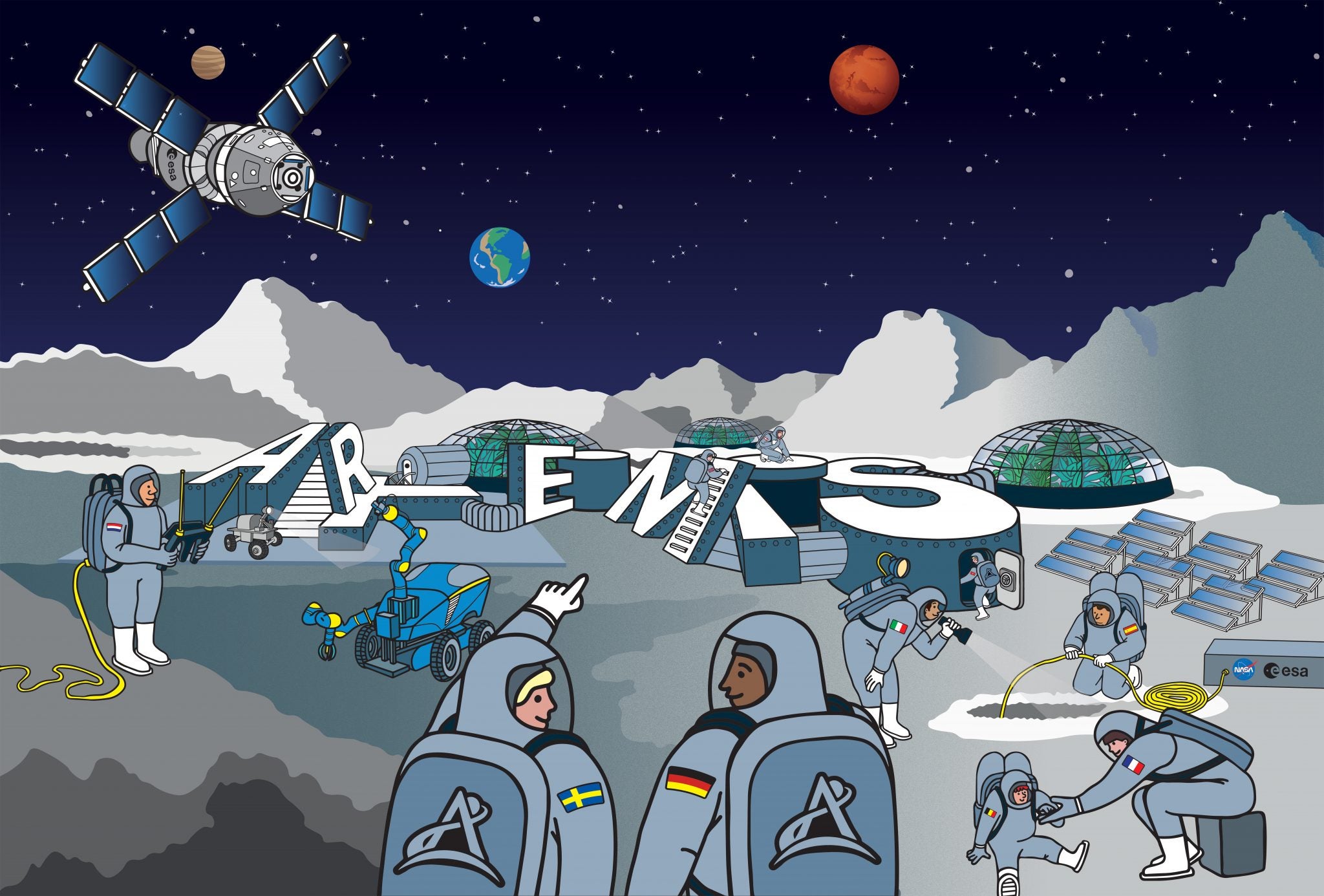
The second winning entry was put together by a team of students consisting of Ziba Artystone, Filip Fernström, Måns Rydh, and Edvard Norman from the Forsbergs Advertising School in Stockholm, Sweden. While doing their research for the project, the artists “wanted to incorporate an element of time-lapse, community and collaboration, whilst altogether inspire whoever sees our piece, and thus hopefully the younger generation of future space explorers,” Artystone said.
This illustration depicts the future of a sustained human presence on the Moon, one of the main goals of the Artemis program. The piece was inspired by Hieronymus Bosch’s painting “The Garden of Earthly Delights,” showing astronauts from different countries working together on the lunar surface.
The goddess Artemis

This piece will not travel to the Moon, but it will be put on display at an exhibit in Berlin to celebrate the Artemis program. It was submitted by Selma Moseng and Linn Hansen from the Kristiania University College in Olso, Norway, and it depicts the goddess Artemis. Artemis is Apollo’s sister in Greek mythology, and NASA has chosen this name for its second lunar project, which seeks to land the first woman on the Moon during the Artemis 3 mission.
“We are both very into mythology and therefore the Artemis Goddess was what caught us,” Moseng said. “We tried to make an image that tells a story, and engages the viewer. I am also really interested in the universe, my own art usually is very influenced by it, so it was a really fun project to do.”
The staircase to the Moon
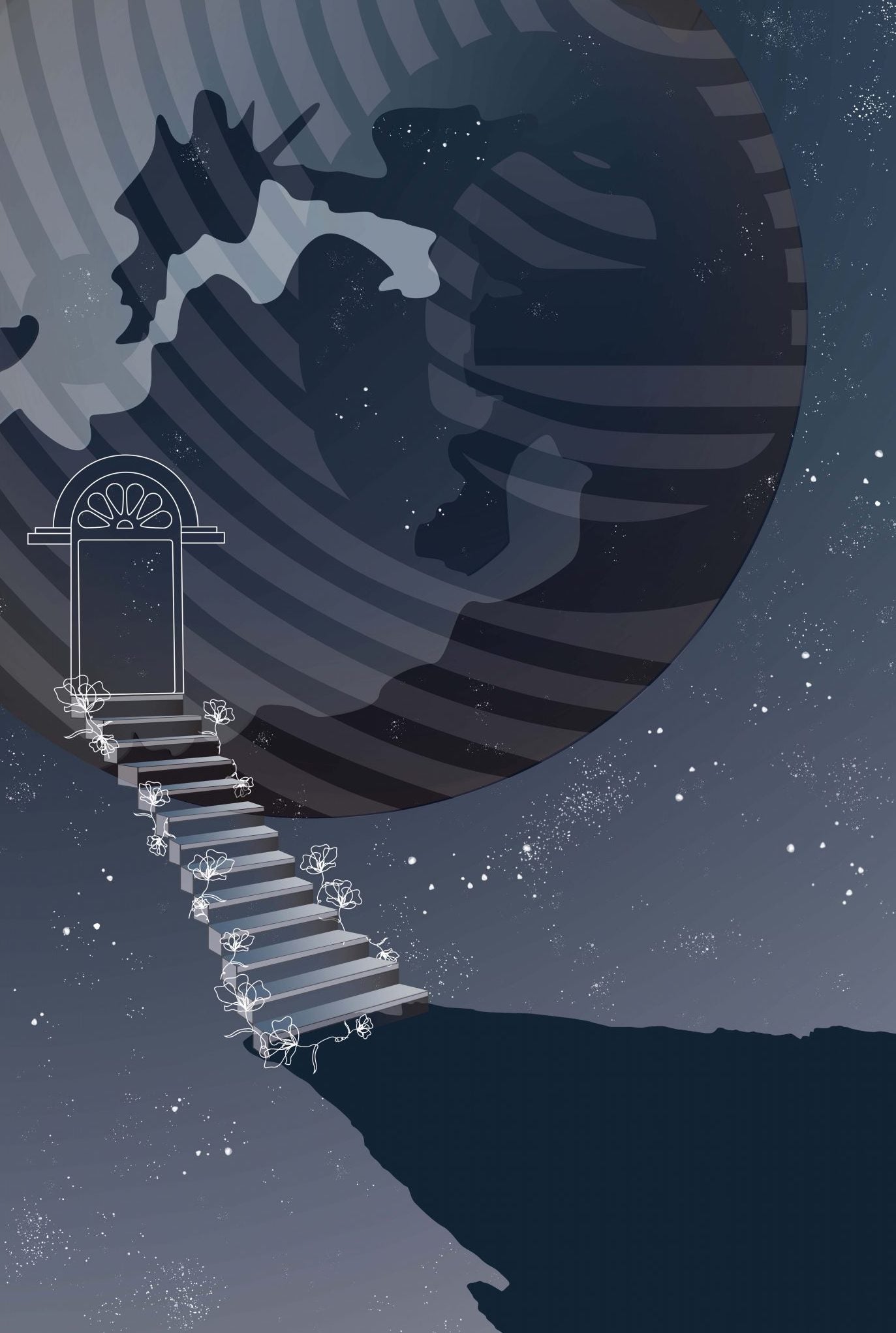
Taking a more abstract approach to the assignment, Sophie Prast, a student at Media College Amsterdam in The Netherlands, illustrated a staircase that connects Earth to the Moon. “I was inspired by a post on social media that detailed how we could be living on the Moon in a few years,” Prast said. “If this happens soon it would be so cool and it inspired me to show that this future is within reach with the knowledge, science, and technology we have today.”
POV: You’re on the Moon
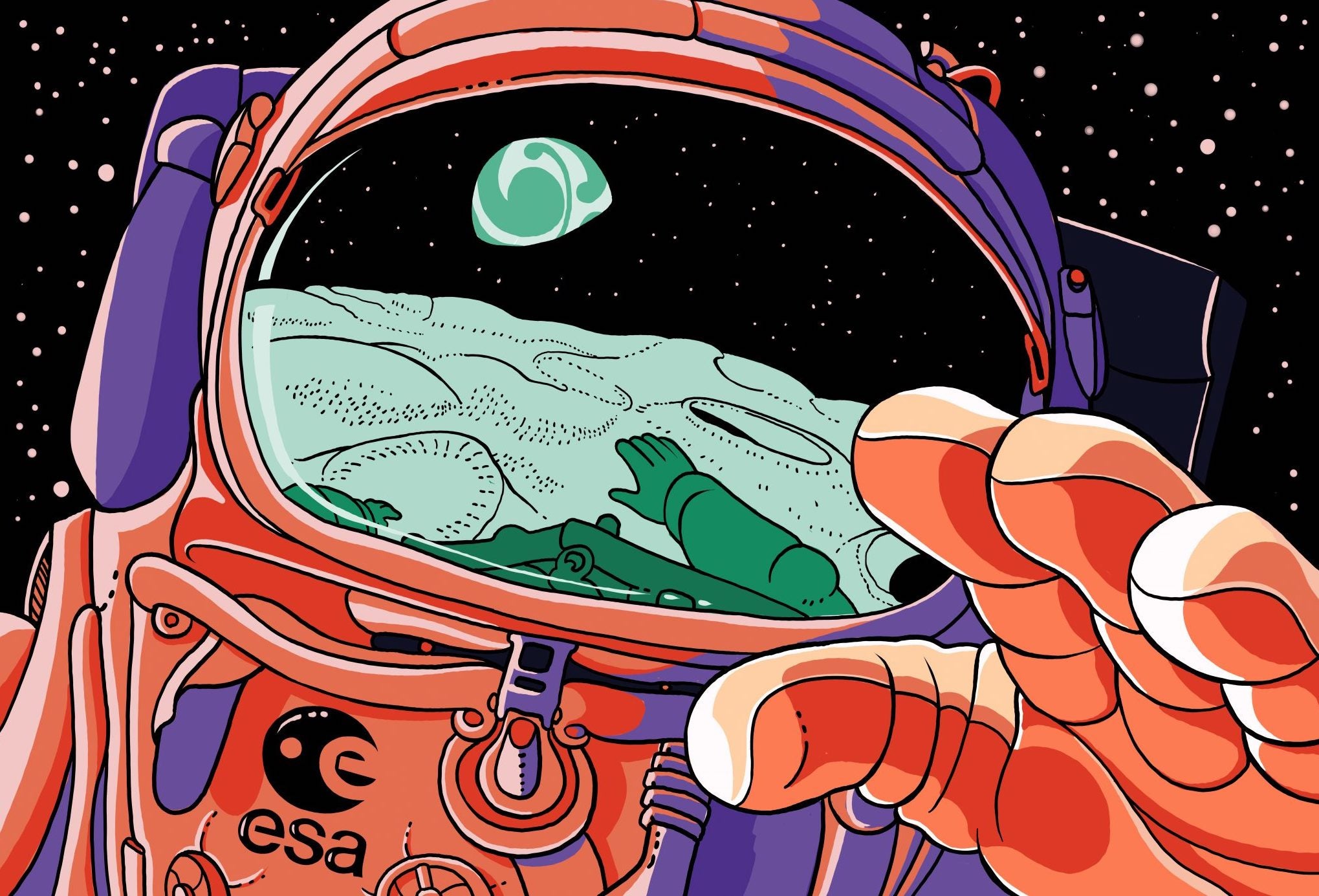
Edoardo Follegatti, a student at the Scuola Internazionale di Comics in Italy, drew inspiration from the popular comic book Watchmen for this illustrative piece. “I tried to include all the most evocative elements of space travel without crossing into science fiction: a clear shot of the astronaut and point of view reflected in the mirror of his helmet,” Follegatti said. “Then of course the lunar surface and the immensity of space.”
Connecting to nature
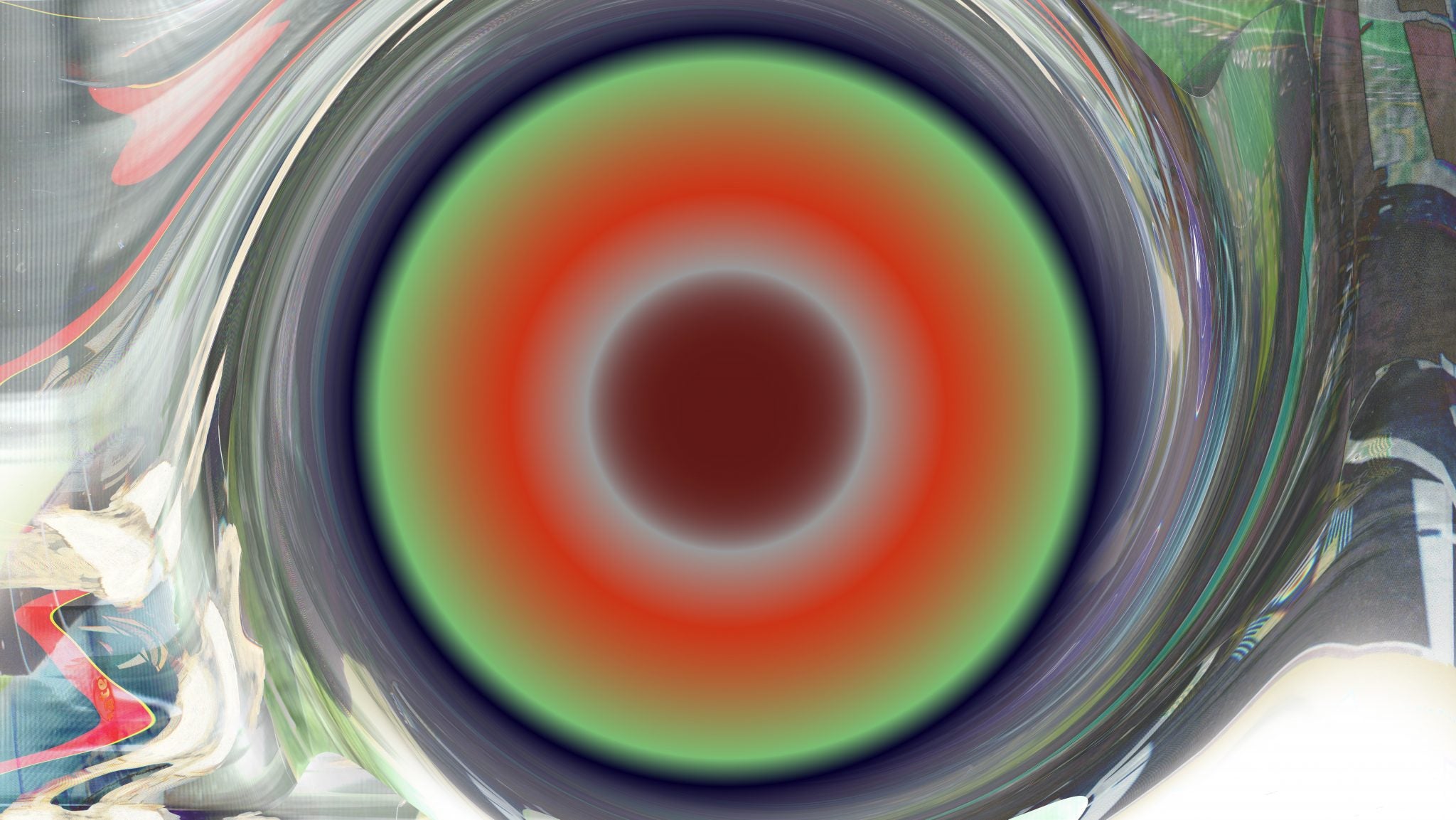
This trippy illustration is from Till Langschied of Germany, who is currently a student at the Dutch Art Institute. Langschied used glitched scans of a 1998 Kennedy Space Centre brochure he received during his visit to Florida as an 11-year-old boy. “By glitching and digitally manipulating these images, I tried to open-up their meaning because there is not a singular idea of space or how to travel it,” Langschied said.
“I was interested in entangling images of the cosmos and space technology with structures of plants, building a bridge between technology and nature,” he continued. “As the question of living bodies existing within space become more pressing, we have to see nature as an anchor when taking root among the stars.”
Artemis is for the children
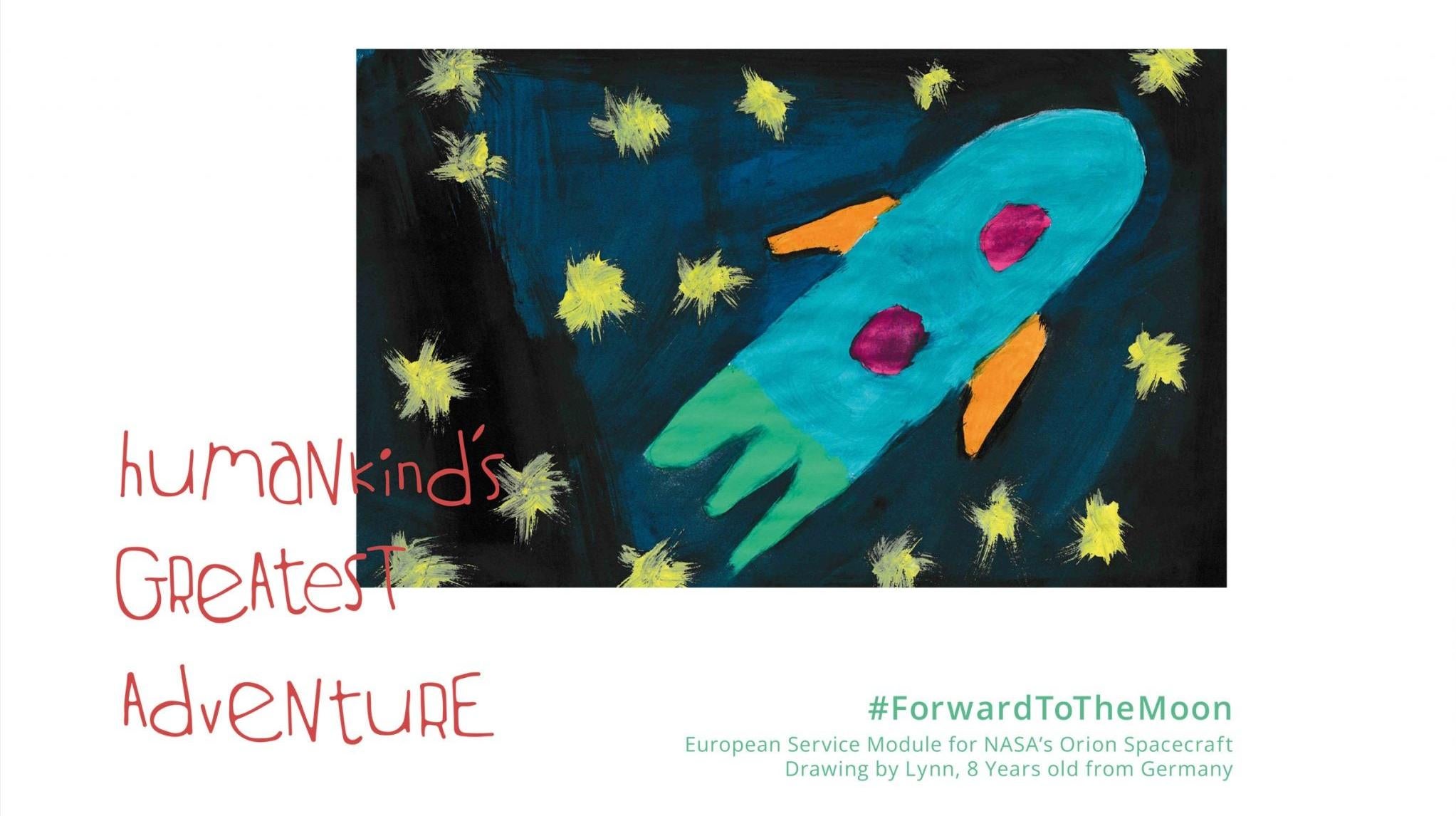
The same way that the Apollo era inspired a generation of space explorers, Artemis is also set to inspire the next generation of astronauts exploring the Moon, Mars, and beyond. For this piece, Lea Haumann, a student at Hochschule Darmstadt in Germany, enlisted the help of 8-year-old Lynn.
“I went in search of our commonality as human beings, and it emerged through the eyes of children,” Haumann said. “Despite what makes us different, we all were children once and dreamed of exploring the vastness of this world and beyond.” Haumann wanted to provide a frame for Lynn’s piece, highlighting a child’s vision of exploring the stars.
Road to nowhere

A piece that truly stands out amongst the others is this virtual sculpture that juxtaposes the theme of the sky with a heavy element like marble. Ana María Poveda Pérez, from the University of Madrid, Spain, created this three-dimensional virtual space with real media.
“A visual construction through virtual media managed to generate opposite realities and representations that came together and sought, from the artificial, to propose a narrative in which the fragility of a non-physical, yet idyllic space was questioned and poetised,” Pérez said.
The first woman on the Moon

To honour the first female astronaut that is scheduled to land on the Moon as part of the Artemis 3 mission, 22-year-old Sara Mancuso from the International School of Comics in Turin, Italy, drew inspiration from NASA astronaut Serena Auñon-Chancellor and NASA engineer Lindsay Aitchison, among other women in this field. The illustration depicts a woman on the Moon, along with a reflection of Mars on her helmet (Artemis is considered a stepping-stone project for a future crewed journey to the Red Planet).
“I was not yet born when the last Apollo mission took place, so I feel very fortunate to be able to attend such a unique and important event, and the return to the Moon, in the coming years,” Mancuso said. “I am even happier that this dream will finally come true for a woman.”
